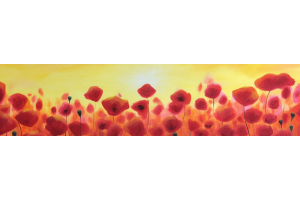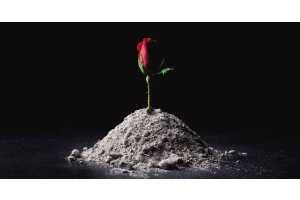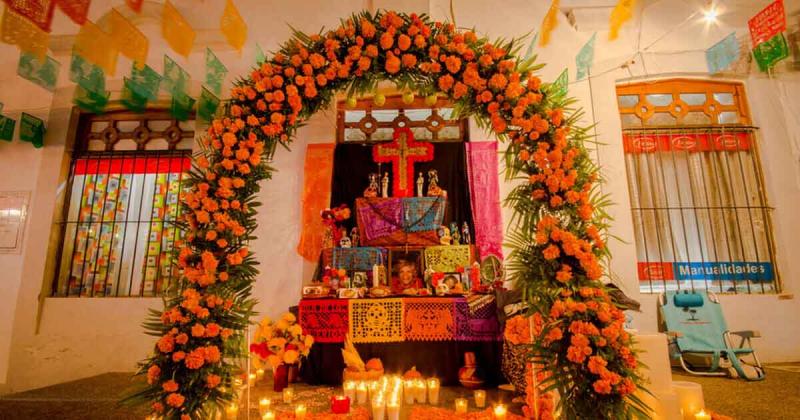
When people die, where do they go? This is a question that cultures worldwide have been trying to answer for thousands of years. Unfortunately, there aren’t many cases of people who have visited the world of the dead and come back to life. Those who may have died and come back to life give accounts that are impossible to prove. This means we will continue to wonder.
This lack of knowledge has produced a world of cultural approaches that have grown over millennia. The truth is that we don’t know, but we are more than willing to guess. In any culture, it’s important to remember the dead. Some do it to avoid revenge, while others do it out of grief. These celebrations take the ordinary act of death and turn it into something extraordinary. The unearthly elements are just a part of the enjoyment.
Honoring Ancestors
Historically, people used the end of the harvest season as a time to honor their ancestors. Many of the world’s celebrations happening in late summer or fall still have a harvest element. They strongly encourage reverence toward people who have died. This comes in the form of offerings or rituals meant to guide souls from one place to another.
In some cultures, these festivals lead the souls of the dead to their final resting place. In others, it’s intended to show them where to go to see their living families. In any case, the important part is the memory. We all carry a love for those who have gone before, especially ones we knew in life. These festivals give us an opportunity to grieve out loud.
Asia
Asia holds a deep connecting history spanning thousands of years. Many countries host holidays unique to them. A majority of the celebrations focus around the lunar calendar, but all are distinct in both the traditions and rituals they keep, as well as origins.
China
China is one of the best-known examples of long-standing cultures revering the souls of the dead. China serves as the historical center of filial piety. In essence, this means taking care of one’s parents. It’s particularly important to attend to them after they have died. China has several festivals surrounding ancestors, such as the Double Ninth Festival and the Ghost Festival. At these times, families take special care to make offerings or perform rituals to their ancestors and other spirits. It serves as a way to remember them and prevent harm from coming to the living.
Double Ninth Festival
The Double Ninth Festival unique name originates, because it is celebrated in the ninth lunar month, on the ninth day. This varies from year to year, but often happens in October. Also called the Chongyang Festival, this event focuses on climbing mountains and eating flower cakes. It’s also a time to honor one’s ancestors. According to tradition, a devil causing a plague would appear to the living on the ninth day of the ninth lunar month. One man told his family to climb a mountain and drink chrysanthemum wine. The devil was confused by the scent and the man jumped at the opportunity, killing the devil, and ending the plague that killed so many.
What Are Hungry Ghosts?
Like many aspects of culture built over hundreds or thousands of years, the concept of hungry ghosts has multiple origins. These souls differ from the typical ghost, which could be the soul of anyone. Many believe that hungry ghosts represent the souls of people who died under difficult circumstances, like an accident or even murder, dying in pain and fear, they go to the realm of hungry ghosts. Others believe hungry ghosts are those whose descendants did not honor them without the benefits and offerings provided to honored ancestors, they become evil spirits wreaking havoc on the living.
In most versions of the story, a monk visits a family and asks for food or drink. A man gathered some and told his wife to give it to the monk. She did not. In some cases, she contaminated it or poisoned it. When she dies, she becomes a hungry ghost. The legend plays out with variations, but the moral of the story is clear, people who are greedy, selfish or cruel in life may be cursed in death to become a hungry ghost.
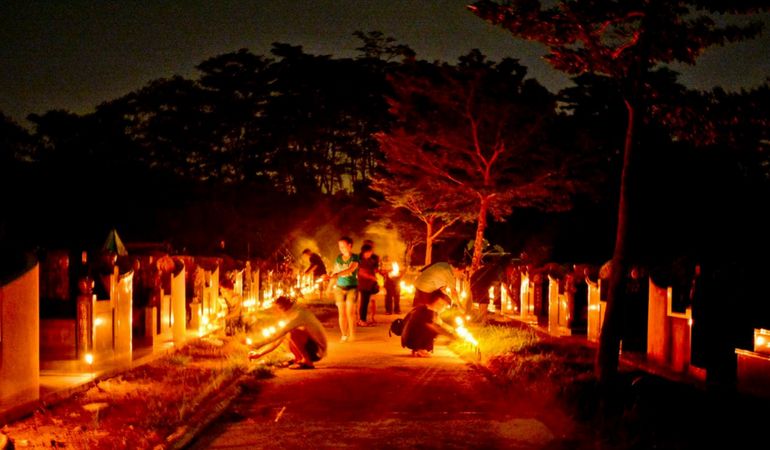
Ghost Month
In the seventh lunar month, China celebrates Ghost Month. At this time, hungry ghosts are released from the spirit world and enter the land of the living. Since these spirits are associated with mischief, people are afraid of angering them. There are many taboos surrounding the month. For example, you should avoid talking badly about the festival or the offerings. In fact, people are often told to avoid going out too late at night or alone. You may encounter misfortune if you anger a ghost while not at home.
Ghost Day
The Ghost Festival culminates on the 15th day of the seventh lunar month. The hungry ghosts have roamed the land and caused trouble for two weeks. By this point, they are ready for their offerings. Unlike the offerings families make to their revered ancestors, the tributes made to hungry ghosts are meant to appease. This is a time for people to show respect for their history. They do this by preparing food to offer several times and bringing out the tablets of their ancestors.
The last day of Ghost Month is the only time the hungry ghosts receive these offerings. Many people believe they must provide the offerings and create a space for the ghosts to enjoy it. This means covering tables so the ghosts may consume the food while sitting underneath. It’s customary to leave an extra seat at the table or leave the front row of a performance empty for the hungry ghosts to enjoy. At the end, the gates of hell close and the hungry ghosts are appeased for another year.
Cambodia - Pchum Ben
Pchum Ben is one of the longest celebrations of the dead. Held in Cambodia, this festival lasts for 15 days. The last day is called Pchum Ben, which loosely translates to mean ‘ball of food’. Food is key, and the ancestors are the chief recipients. In fact, families who participate in this festival aim to celebrate their ancestors going back as far as seven generations. At this time, families make lavish meals to take to a local pagoda. A pagoda is a tiered tower that often has a religious basis. The families feed the monks who live there. They believe their ancestors will go there to receive offerings at this time.
In the early morning, families prepare food in the shape of balls. They will throw these balls on the ground near the pagoda. They believe some of their family members will not be allowed to enter the pagoda because of things they did in life. Instead, they must take the offerings thrown outside. Many people believe they must perform this ritual outside three pagodas. If they do not, their ancestors may become angry and take revenge on them.
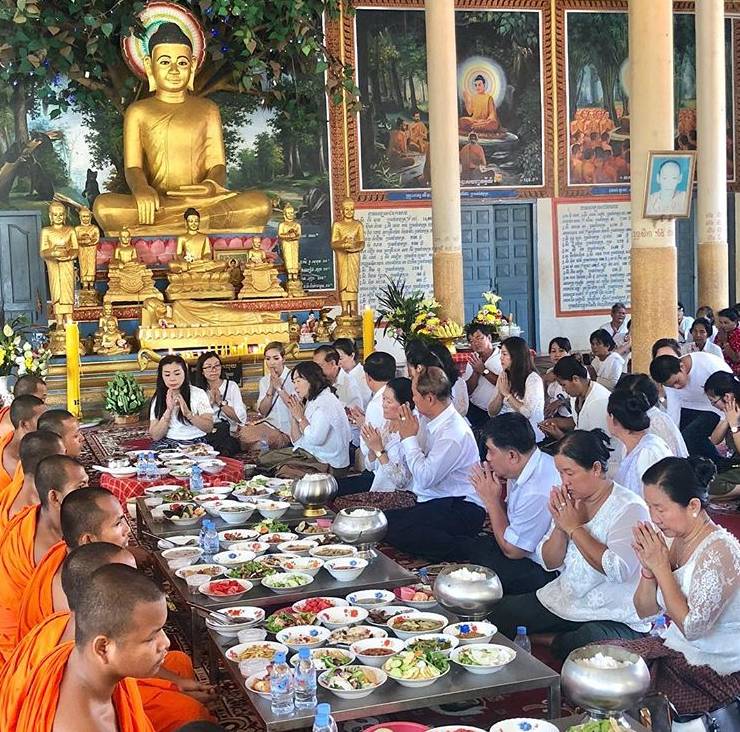
Japan - Obon Festival
The Obon Festival in July or August is a time to honor their ancestors. As one of the three biggest holidays in Japan, many people take the whole week for this celebration. On the first day, families take paper lanterns to their ancestors’ graves. Some people light a fire at their homes to help their ancestors find their way. This is a time for feasting and making offerings. The end of the festival involves moving the paper lanterns to guide the spirits back to their rest. More recently, some people have chosen to float the lanterns down the river. This symbolizes the souls’ descent back to the sky.
The Obon Festival highlights what may confuse people who aren’t familiar with the lunar calendar. Not everyone follows the solar calendar. Although most cultures worldwide have adopted the western calendar with its 12 months for formal use, holidays are a different story. For example, Obon is typically celebrated in the seventh month of the year, on the 13th to the 15th. People following the solar calendar may celebrate it in July, while those following the lunar calendar will host it in August.
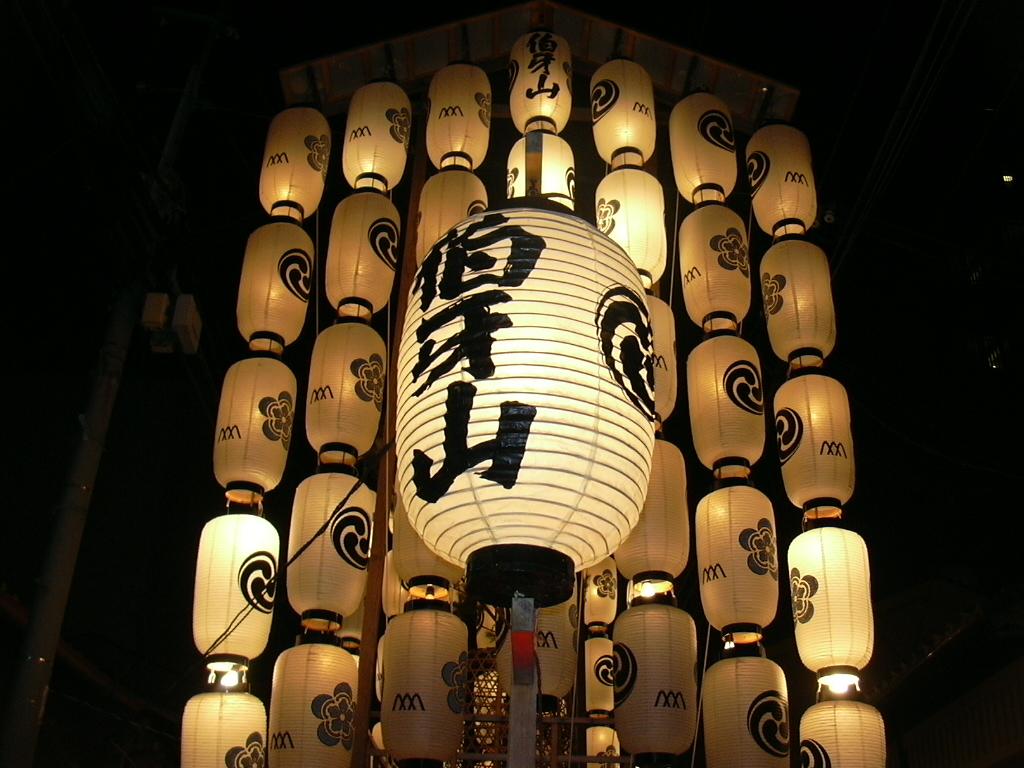
Harvest Festivals
It’s hard to separate harvest festivals from celebrations honoring the dead. These two are tied together in cultures all over the world. In some places, the festivals focus more on an opportunity to memorialize the dead. This is not always the case, however. Many cultures focus more on the harvest. They may also believe that the dead help to ensure a better harvest. For example, Chuseok and Gai Jatra are happy celebrations coinciding with the change of the season, a time to show the bounty of the harvest and plan for the coming year.
Korea - Chuseok
Many refer to the Korean holiday of Chuseok as a type of “Thanksgiving” celebration. It can happen in August or September, depending on the lunar calendar. This festival celebrating the harvest lasts for three days and involves tons of food, visits with families, and the giving of gifts. Families gather from out of town.
Women create a large meal to showcase the latest fruits of the harvest. For example, one traditional dish is Songpyeon. It’s a rice cake made with new rice that is ground. The rice is stuffed with nuts or beans and steamed with pine needles in water. The effect smells and tastes like Autumn. Chuseok is a time to give thanks to friends, family members and business associates with gifts. It’s customary to give fresh foods or useful gifts people can consume.
Nepal - Gai Jatra
Gai Jatra is a harvest celebration in Nepal in the Kathmandu Valley. This festival is a time where people take to the streets celebrating cows and honoring the harvest. It’s based on the agricultural cycle, so it doesn’t happen on the same day each year. People gather during the middle of the monsoon season. This is the best time to plant rice. Gai Jatra typically happens around late August.
The cows are revered as animals that guide the souls of the dead to the next world. Families often lead cows through the streets, calves specifically, as a way to show honor to their lost loved ones. Since many families cannot afford a cow, they will dress up a child as a cow. Although this seems like a somber celebration, it is a bright and happy occasion full of street performances and entertainment.

Europe
Samhain takes center stage of most thoughts toward Halloween celebrations in Europe and the British isles. This powerful festival celebrated over thousands of years has spread thousands of miles over the centuries. It blends with other cultures’ beliefs about death and how they honor those who have died. The modern examples range from the bright and delightful, like Derry Halloween to the solemn and respectful Zaduszki in Poland. People take from the traditions those things that give them the most comfort, and turn it into an event serving everyone in the area.
Poland - Zaduszki
Like many countries, Poland celebrates All Souls’ Day. On November 2nd, the souls of the dead visit their living descendants. In modern-day Poland, this day is called Zaduszki. Although many people see the date and assume this is another take on Halloween, it is distinct. In fact, aside from Easter and Christmas, it is one of the most important holidays for Polish families who celebrate it. There are a few similarities to the Celtic Samhain, which may serve as a cultural artifact of the people’s early presence in Poland.
On November 1st, families clean the graves of their ancestors and prepare for the celebration. At night, families light a candle and leave it at the graves. Pictures of cemeteries feature a world alive with light, even in the middle of the night. The lights give souls a path to follow. People gather with their extended families. They set an extra place at the table with food for those souls who have traveled a long way. At the end of the meal, they take the food to the cemetery as an offering.
Northern Ireland - Halloween in Derry
Londonderry is one of the largest cities in Northern Ireland. If you’re looking for a celebration combining modern Halloween with the traditions of ancient Samhain, Derry is one of the best. Thousands of years ago, the Celts harvest celebration coexisted with a belief that the dead crossed over into the world of the living at that time. They performed rituals designed to appease or even hide from the spirits, to keep them from making trouble.
In Derry, it’s the biggest day on the calendar. The city fills up as the carnival begins. Shops are chock full of costumes and other trinkets customers can buy. The days fill with tours of Derry’s oldest places. The nights are jam-packed with activities like visits to haunted houses, parades, singing and dancing. The event draws in thousands from all over the world.
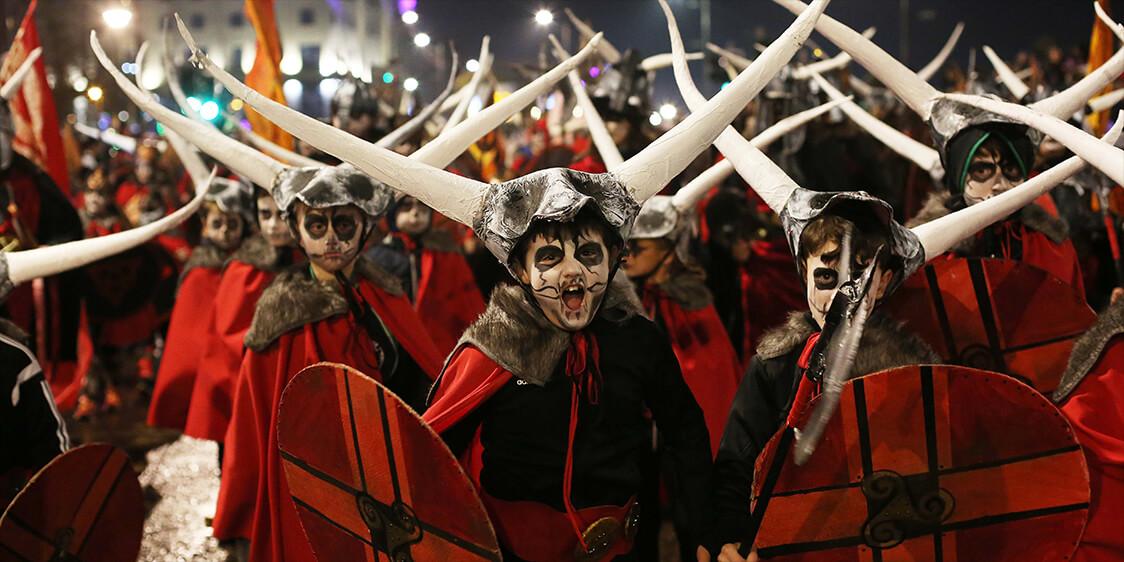
Americas
American Halloween tends to take up all the air in the room from discussions around harvest festivals like there isn’t other options. However, many countries in the Americas have vibrant, ancient celebrations worthy of note. Mexico’s Día de los Muertos may be the best known, but there are others like Bolivia’s Fiesta de las Ñatitas and Haiti’s Guédé. These festivals are times for family and friends to gather and celebrate not just those who have gone before, but also their histories.
Mexico - Día de los Muertos
Integration into American culture has created the idea that Mexico’s Día de los Muertos (Day of the Dead) is similar to Halloween. This isn’t accurate. Although the timing is close, the Day of the Dead is a celebration of life and those who have gone before. It’s a time to gather with family and honor ancestors. By comparison, Halloween focuses more on treats and offerings to the living.
This celebration is full of color and activities with an ancient background. It promotes the idea that the spirits can cross a thin veil between living and death. To encourage them to visit, their families put out offerings and pictures on an ofrenda. Marigold petals surround the design leading the dead back to their final rest. People dress up in traditional costumes and paint their faces to look like a skull.
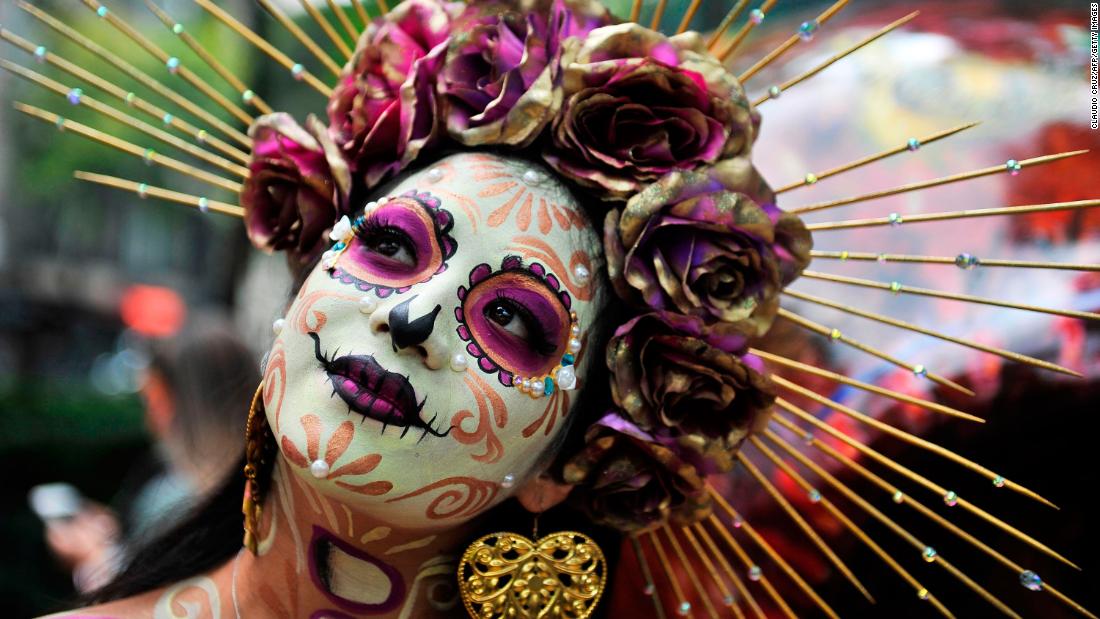
Haiti - Guédé
At the same time as Día de los Muertos, Haiti celebrates Guédé. It’s also called Fet Gede or just Gede. This is a different type of Feast of the Dead celebration, with a distinctly Creole origin. The party is compared to a combination of Mardi Gras, Halloween, and Día de los Muertos. While it’s most popular in Haiti, there are many in New Orleans who also get into the spirit. It involves dancing, feasting, visiting cemeteries and making offerings to the dead. People like to dress up and dance using traditional moves to the sound of a drum. At this time, they believe the spirits pass on the road between the living and death.
This passage requires approval from Death. Death, which is referred to as Papa Gede, was the first person who died. He takes souls to the afterlife. Although he is often imbued with quite a dirty sense of humor, he is also believed to be gentle. People pray to him requesting he spare the life of a child or loved one. If he or one of the other spirits grants a request, it must be repaid by the end of the celebration. Otherwise, there may be vengeance.
Bolivia - Fiesta de las Ñatitas
Some compare Bolivia’s Fiesta de las Ñatitas to Mexico’s Day of the Dead celebrations. However, this is an oversimplification. In Bolivia, this celebration occurs about a week after most countries’ All Souls’ Day and All Saints’ Day celebrations. This event centers on skulls. These are the ñatitas, and they are believed to form a beneficial and sometimes chaotic relationship with the people who care for them.
Although the skulls are ostensibly ancestors, this isn’t a requirement. In fact, it could be anyone’s skulls. The country does not ensure a permanent burial plot. That means there is a certain degree of literal turnover in cemeteries, with a need to find a place for the older remains. Families trade or give skulls to others. On the festival day, families head to the cemetery with their own skulls. They may give offerings to other skulls. The event is a nod to the indigenous people of the area. They believed the skulls of the dead gave benefits to their fields or their lives.
Everyone wants to remember the ones they’ve loved and passed away. It is natural, and part of human history as old as people could understand what it means to live and die. The proof is the celebrations in cultures all over the world honoring their ancestors and those who’ve passed beyond the veil of life. It is an opportunity for families to travel home for a homemade feast, tread the same paths to pagoda’s that their ancestors walked, or leave an empty seat in the place where someone special used to sit. These festivals are full of light and fun, but they also provide the opportunity to honor the grieving as well as the deceased.


